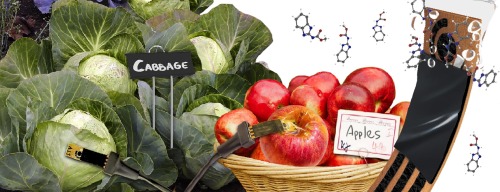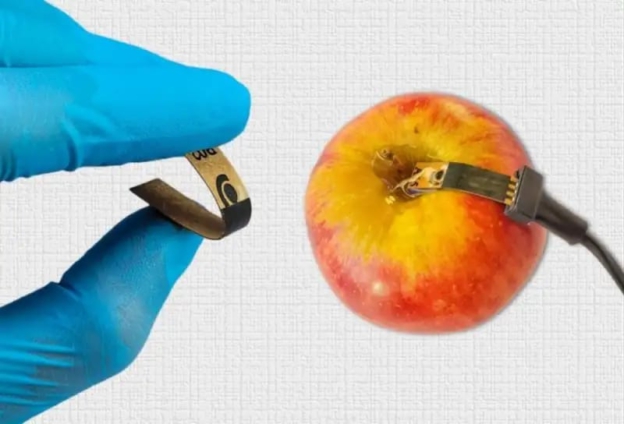Scientists at the University of Sao Paulo (USP) in Brazil developed a Kraft paper-based electrochemical sensor that can detect residues of pesticides in fruits and vegetables in real-time when linked to an electrical device.
It can detect carbendazim, a fungicide that is extensively used in apples and cabbage, in some countries despite being prohibited. Carbendazim is a systemic, broad-spectrum benzimidazole fungicide and a benomyl derivative. It is also used as a casting worm control agent in recreational grass settings such as golf courses and tennis courts, and is permitted for that purpose only in some countries.
The fungicide is used to treat plant diseases in grains and fruits such as citrus, avocados, strawberries, pineapples, and pomegranates. High amounts of carbendazim have been shown in studies to induce infertility and to damage the testicles of experimental animals.

According to the findings, which were published in the journal Food Chemistry, traditional techniques for determining whether a food sample includes traces of pesticides require grinding up the sample and subjecting it to time-consuming chemical processes before any such substances can be identified. Wearable sensors, such as the paper-based electrochemical sensor, remove the need for these complicated procedures in agriculture and the food business.
“Inspection is much easier, cheaper and reliable for a supermarket, restaurant or importer, for example," said Osvaldo Novais de Oliveira Junior, penultimate author of the article and a professor at IFSC-USP.
According to José Luiz Bott Neto, the article's corresponding author and a postdoctoral fellow at IFSC-USP, the new device is extremely sensitive and mimics the glucometers used by diabetics to monitor blood sugar, except that the findings of food scanning for pesticides are presented on a smartphone.
"In the tests we performed, its sensitivity was similar to the conventional method's. Plus, it's fast and inexpensive."
He says that the device is made up of a paper substrate modified with carbon ink and then electrochemically treated in an acid medium to trigger carboxyl groups and allow detection.
They use the silkscreen method to transfer carbon-conducting ink to a piece of kraft paper, resulting in an electrochemical device with three carbon electrodes and an acidic solution to activate the carboxyl groups.
“In other words, oxygen atoms are added to the structure of the carbon electrode. When it comes into contact with a sample contaminated with carbendazim, the sensor induces an electrochemical oxidation reaction that permits detection of the fungicide. The quantity of carbendazim is measured via electrical current," he said.
According to Thiago Serafim Martins, the article's first author and a postdoctoral associate at IFSC-USP, when creating the gadget, the researchers assessed the stability and structure of the paper substrate.
"The properties of the paper itself were an important part of our research.”
Latest Stories
-
Parliament Sports Committee member Ekow Assafuah kicks against Kurt Okraku’s third-term bid
9 minutes -
Photos: How Arsenal unveiled Viktor Gyokeres
34 minutes -
Is DSTV worth What Ghanaians Pay?
2 hours -
Chiefs back Anti-Illegal Mining personnel’s raid on galamsey sites in Prestea Huni Valley
2 hours -
Fair Wages and Salaries Commission inaugurates 7-member board to ensure equity in public sector compensation
3 hours -
Reviving Growth: A bold step by the Bank of Ghana and the Mahama administration
3 hours -
Vice President of Ghana meets management of Afriwave Telecom
3 hours -
Honouring a Legend: Why Ghana must honour Daddy Lumba with a Posthumous PhD
4 hours -
EOCO seizes Lamborghini from Shatta Wale in FBI-backed asset recovery operation
4 hours -
NCD Alliance hails MahamaCares; urges safeguards against ‘unhealthy’ industries
4 hours -
PURC Volta/Oti office resolves over 99% of utility complaints in 2025 mid-year report
4 hours -
MTN Ghana supports Ada Asafotufiami Festival with GH₵32,000
4 hours -
Ghanaian culture takes centre stage in France at GoldCoastEvent Festival 2025
4 hours -
Mrs Sophia Wood
5 hours -
The era of high interest rates cannot be sustained – BoG Governor warns banks
5 hours

